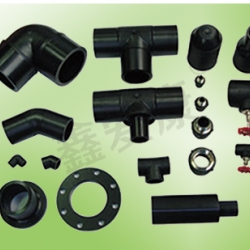The HDPE tube is a high crystallinity, non-polar thermoplastic resin. The original HDPE has a milky white appearance and a semi-transparent shape in a thin section. PE has excellent resistance to most living and industrial chemicals. Certain types of chemicals can cause chemical corrosion, such as corrosive oxidants (concentrated nitric acid), aromatic hydrocarbons (xylene), and halogenated hydrocarbons (carbon tetrachloride). The polymer is non-hygroscopic and has good water vapor resistance and can be used for packaging purposes. HDPE has excellent electrical properties, especially high dielectric strength, making it suitable for wire and cable. Medium to high molecular weight grades have excellent impact resistance, both at ambient temperatures and even at low temperatures of -40F.
PE has many uses, such as wires, cables, hoses, tubes and profiles. Pipe applications range from small-section yellow tubes for natural gas to thick-walled black tubes for industrial and urban pipelines up to 48 in. diameter. Large diameter hollow wall tubes are used as an alternative to rainwater drains and other sewer lines made of concrete to grow rapidly.
Sheet and thermoforming
The thermoformed linings of many large picnic reefers are made of PE for toughness, light weight and durability. Other sheet and thermoformed products include fenders, tank liners, tray guards, shipping boxes and cans. A large number of rapidly growing sheet applications are in the mulch or pool bottoms, which are based on MDPE's toughness, chemical resistance and impermeability.
Blow molding
HDPE 1/3 or more sold in the United States is used for blow molding purposes. These range from bottles containing bleach, motor oil, detergents, milk and distilled water to large refrigerators, car fuel tanks and canisters. Blow molding grade characteristics such as melt strength, ES-CR and toughness are similar to those used for sheet and thermoforming applications, so similar grades can be used.
injection
Blow molding is commonly used to make smaller containers (less than 16 oz) for packaging medicines, shampoos and cosmetics. One advantage of this process is the automatic cornering of the bottles, without the need for post-finishing steps like normal blow molding. Although some narrow MWD grades are used to improve surface finish, medium to wide MWD grades are typically used.
Injection molding
There are countless applications for HDPE, ranging from reusable thin-walled beverage cups to 5-gsl cans, which consume 1/5 of domestically produced HDPE. Injection molding grades generally have a melt index of 5 to 10, and have a higher flowability grade with a lower toughness grade and processability. Uses include daily necessities and food thin wall packaging; tough, durable food and paint cans; high environmental stress cracking applications such as small engine fuel tanks and 90-gal trash cans.
Rotational molding
Materials using this processing are generally comminuted into a powder which is melted and flows in a thermal cycle. Rotational molding uses two types of PE: general purpose and crosslinkable classes. General-purpose MDPE/HDPE typically have densities ranging from 0.935 to 0.945 g/cc and have a narrow MWD for high impact and minimal warpage, with melt indices typically ranging from 3-8. Higher MI grades are generally not applicable because they do not have the desired impact and environmental stress crack resistance of rotomoulded articles.
High performance rotational molding applications utilize the unique properties of their chemically crosslinkable grades. These grades are fluid in the first stage of the molding cycle and then cross-linked to form their excellent resistance to environmental stress cracking and toughness. Abrasion resistance and weather resistance. The cross-linkable PE is uniquely suited for use in large containers ranging from 500-gal to various chemical storage tanks to 20,000-gal agricultural storage tanks.
film
PE film processing is generally performed by ordinary blown film processing or flat extrusion processing. Most PEs are used for film, general low density PE (LDPE) or linear low density PE (LLDPE). HDPE film grades are typically used where superior stretchability and excellent barrier properties are required. For example, HDPE films are commonly used in merchandise bags, grocery bags, and food packaging.


